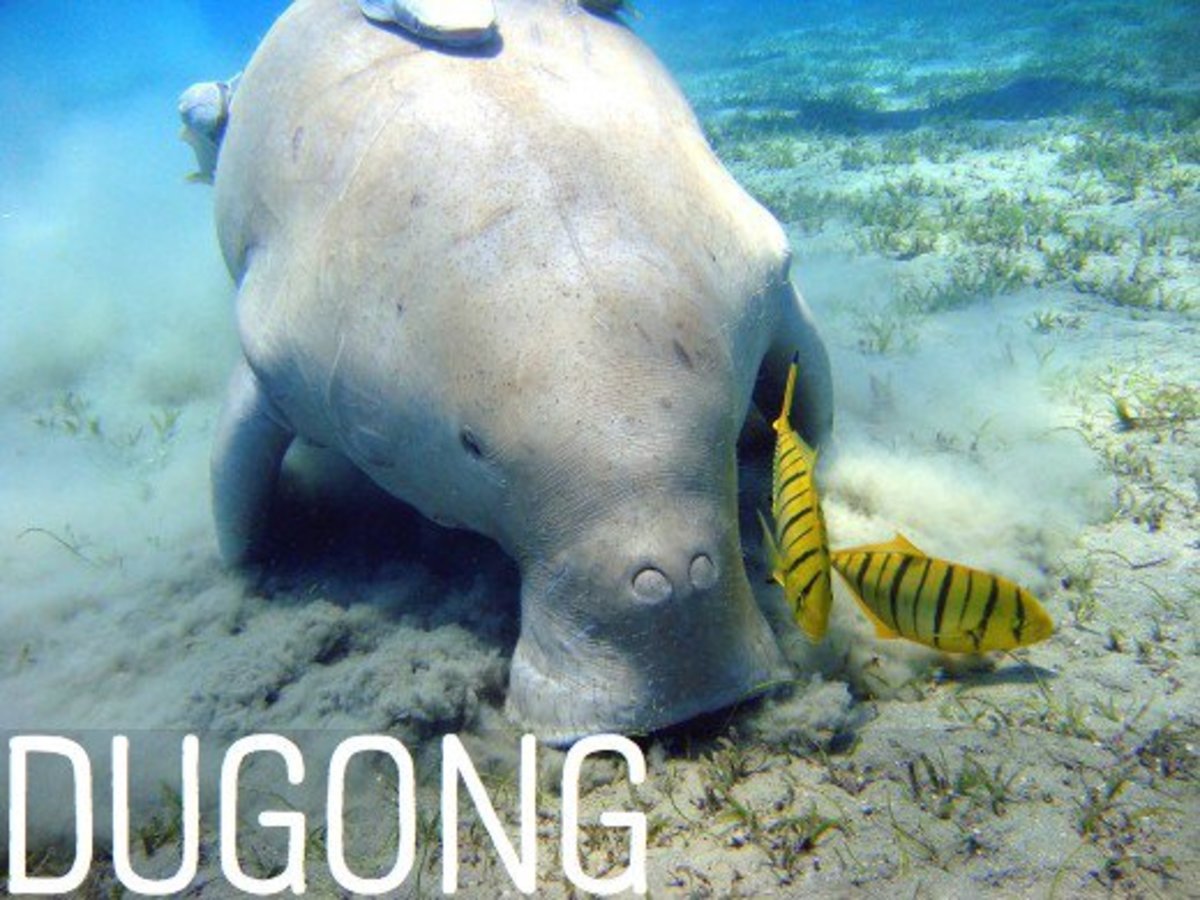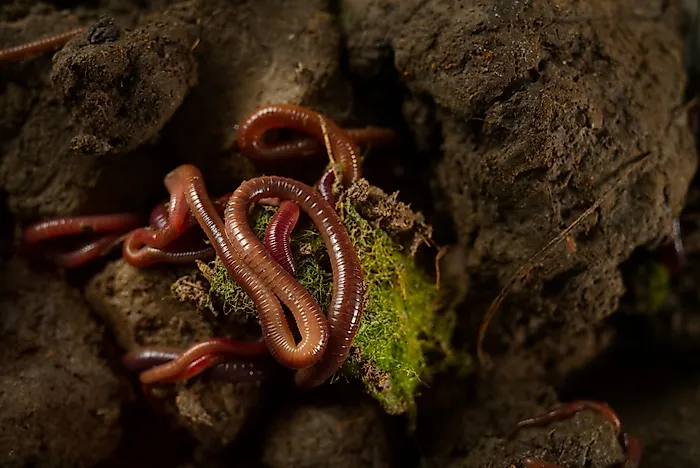Here light reaches all the way to the bottom. In marine profundal zones echinoderms such as sea urchins, and crustaceans such a a few species of crabs, are also found. What are the names of God in various Kenyan tribes? These nekton usually move freely between the littoral and limnetic zones. 3. The cookie is set by the GDPR Cookie Consent plugin and is used to store whether or not user has consented to the use of cookies. The forest is a vast expanse of trees and foliage that covers much of the world. The secondary (and higher) consumers are swimming insects and fish. And 99% of this is either frozen in glaciers and pack ice or is buried in aquifers. These animals include sea stars, sea urchins, sea cucumbers, barnacles, and anemones. In contrast, the Benthic Zone is the bottom-most layer of a body of water, extending from the seabed or shoreline down to any point where it meets with an underwater obstruction (such as rocks). We and our partners use cookies to Store and/or access information on a device. While benthic fauna differs between lakes, Chironomidae and Oligochaetae often dominate the benthic fauna of the profundal zone because they possess hemoglobin-like molecules to extract oxygen from poorly oxygenated water. Living within the plant matter is a cornucopia of animals including snails, amphibians, crustaceans, insects, and fish. The dwarf mongoose can be found in Africa, and it is the smallest species of mongoose. Life in the limnetic zone is dominated by.  However, basic animals such as sea Therefore, it typically has an abundance of aquatic plant and algae growth. Which of the following animals are both a prey and a predator? The animals that live in this zone will eat anything since food is some animals that live in thw nertic zone are bluefin tuna and An oligotrophic lake contains little concentrations of nutrients required for plant growth. Where is the magnetic force the greatest on a magnet. This is typically below the thermocline, the vertical zone in Some other common inhabitants of the littoral zone are cattails, reeds, crawfish, snails, insects, zooplankton, and small fish. . community. Performance cookies are used to understand and analyze the key performance indexes of the website which helps in delivering a better user experience for the visitors.
However, basic animals such as sea Therefore, it typically has an abundance of aquatic plant and algae growth. Which of the following animals are both a prey and a predator? The animals that live in this zone will eat anything since food is some animals that live in thw nertic zone are bluefin tuna and An oligotrophic lake contains little concentrations of nutrients required for plant growth. Where is the magnetic force the greatest on a magnet. This is typically below the thermocline, the vertical zone in Some other common inhabitants of the littoral zone are cattails, reeds, crawfish, snails, insects, zooplankton, and small fish. . community. Performance cookies are used to understand and analyze the key performance indexes of the website which helps in delivering a better user experience for the visitors.  Webd. [5] Microbial levels in the profundal benthos are higher than those in the littoral benthos, potentially due to a smaller average sediment particle size. The biome with high amounts of precipitation, large narrow-leaved evergreen trees, and epiphytes including lichens is the: a. temperate deciduous forest. For example, crustaceans, crabs, fishes like eels, snails, turtles, etc. Continue with Recommended Cookies, The profundal zone is the area of a lake or pond that extends from the waters surface to its deepest point. large herds of herbivorous mammals. Youve been successfully subscribed to our newsletter! of diversity in the area. Profundal Zone Definition | Profundal Zone Animals & Plants Ecosystem, Oligotrophic Lakes and Eutrophic Lakes Examples, Ekman Spiral Effect & Ekman Transport | Ekman Layer, What Causes the Coriolis Effect | Examples of Coriolis Effect, Gyres Definition | Gyres Ocean | Subtropical Gyre & Subpolar Gyre, Neap Tides Definition | Neap Tides Moon Phase | Neap Tides Diagram. c. tropical rain forest. Profundal Zone Plants. The deeper down along the thermocline, the lowest the oxygen levels, so the epilimnion contains the highest levels of oxygen and the hypolimnion the lowest levels. In marine biology, the neritic zone, also called coastal waters, the coastal ocean or the sublittoral zone, refers to that zone of the ocean where sunlight reaches the ocean floor, that is, where the water is never so deep as to take it out of the photic zone. The temperature difference may be large enough to hamper mixing with the littoral zone in some seasons which causes a decrease in oxygen concentrations. The upper 200 meters (656 feet) of the ocean is called the euphotic, or sunlight, zone. What Happened To Happi Floss After Shark Tank? The limnetic zone is the most photosynthetically-active zone of a lake since it is the primary habitat for planktonic species. The biome with high amounts of precipitation, large narrow-leaved evergreen trees, and epiphytes including lichens is the: a. temperate deciduous forest.
Webd. [5] Microbial levels in the profundal benthos are higher than those in the littoral benthos, potentially due to a smaller average sediment particle size. The biome with high amounts of precipitation, large narrow-leaved evergreen trees, and epiphytes including lichens is the: a. temperate deciduous forest. For example, crustaceans, crabs, fishes like eels, snails, turtles, etc. Continue with Recommended Cookies, The profundal zone is the area of a lake or pond that extends from the waters surface to its deepest point. large herds of herbivorous mammals. Youve been successfully subscribed to our newsletter! of diversity in the area. Profundal Zone Definition | Profundal Zone Animals & Plants Ecosystem, Oligotrophic Lakes and Eutrophic Lakes Examples, Ekman Spiral Effect & Ekman Transport | Ekman Layer, What Causes the Coriolis Effect | Examples of Coriolis Effect, Gyres Definition | Gyres Ocean | Subtropical Gyre & Subpolar Gyre, Neap Tides Definition | Neap Tides Moon Phase | Neap Tides Diagram. c. tropical rain forest. Profundal Zone Plants. The deeper down along the thermocline, the lowest the oxygen levels, so the epilimnion contains the highest levels of oxygen and the hypolimnion the lowest levels. In marine biology, the neritic zone, also called coastal waters, the coastal ocean or the sublittoral zone, refers to that zone of the ocean where sunlight reaches the ocean floor, that is, where the water is never so deep as to take it out of the photic zone. The temperature difference may be large enough to hamper mixing with the littoral zone in some seasons which causes a decrease in oxygen concentrations. The upper 200 meters (656 feet) of the ocean is called the euphotic, or sunlight, zone. What Happened To Happi Floss After Shark Tank? The limnetic zone is the most photosynthetically-active zone of a lake since it is the primary habitat for planktonic species. The biome with high amounts of precipitation, large narrow-leaved evergreen trees, and epiphytes including lichens is the: a. temperate deciduous forest.  all the plant and animal populations living and interacting in a given enviornment. e. periodic fires. This zone extends all the way to where the continental shelf drops off into the abyssal plane. Compare benthic zone. This zone extends at a depth where sunlight penetrates. 45 Examples of Animals that Live in The Forest (A to Z List with Pictures) By Garreth / November 21, 2021. Littoral zooplankton communities are made up of a diverse assemblage of protozoans and other protists, rotifers, and microcrustaceans. Manage Settings
all the plant and animal populations living and interacting in a given enviornment. e. periodic fires. This zone extends all the way to where the continental shelf drops off into the abyssal plane. Compare benthic zone. This zone extends at a depth where sunlight penetrates. 45 Examples of Animals that Live in The Forest (A to Z List with Pictures) By Garreth / November 21, 2021. Littoral zooplankton communities are made up of a diverse assemblage of protozoans and other protists, rotifers, and microcrustaceans. Manage Settings What is the frequency used by the glide slope transmitter? Slow-Start to Prevent Pond Turnover & Fish Kills. Refer to each styles convention regarding the best way to format page numbers and retrieval dates. .
 Again, the size of this zone depends on the age and water clarity of the pond or lake. A eurotrophic lake is rich in plant nutrients, especially phosphates and nitrates.
Again, the size of this zone depends on the age and water clarity of the pond or lake. A eurotrophic lake is rich in plant nutrients, especially phosphates and nitrates.  Best 5 Universities for Business and Economics. In addition to the MLA, Chicago, and APA styles, your school, university, publication, or institution may have its own requirements for citations. Clams, worms, oysters, shrimp-like crustaceans and mussels are all examples of benthic organisms. Coral reefs, rocky coasts, sandy beaches, and sheltered embayments each possess specialized, intricately interrelated floral and faunal littoral populations. So do inver-tebrates such as Chaoborus, also known as phantom midges. We also acknowledge previous National Science Foundation support under grant numbers 1246120, 1525057, and 1413739. Try BYJUS free classes today! e. periodic fires. The fauna are heterotrophs, meaning that they eat dead organisms and use oxygen for cellular respiration. There are many animals that live in the sunlit zone, and these Although they are bo, Cerenkov radiation Light emitted when energetic particles travel through a transparent medium, such as water, at a speed higher than the velocity of, limnetic zone The area in more extensive and deeper freshwater ecosystems that lies above the depth at which light penetration is reduced to a level, North Atlantic deep water (NADW) A water mass (salinity 34.935.03 parts per thousand, temperature 1.02.5 C) that was originally believed to form i, cryptophyte One of Raunkiaer's life-form categories, being a plant in which the perennating bud lies below the ground or water surface. As a result of this, the epipelagic zone is also where most pelagic animals are found, and they are often big. Most online reference entries and articles do not have page numbers. { "17.1A:_Ecosystem_Productivity" : "property get [Map MindTouch.Deki.Logic.ExtensionProcessorQueryProvider+<>c__DisplayClass228_0.
Best 5 Universities for Business and Economics. In addition to the MLA, Chicago, and APA styles, your school, university, publication, or institution may have its own requirements for citations. Clams, worms, oysters, shrimp-like crustaceans and mussels are all examples of benthic organisms. Coral reefs, rocky coasts, sandy beaches, and sheltered embayments each possess specialized, intricately interrelated floral and faunal littoral populations. So do inver-tebrates such as Chaoborus, also known as phantom midges. We also acknowledge previous National Science Foundation support under grant numbers 1246120, 1525057, and 1413739. Try BYJUS free classes today! e. periodic fires. The fauna are heterotrophs, meaning that they eat dead organisms and use oxygen for cellular respiration. There are many animals that live in the sunlit zone, and these Although they are bo, Cerenkov radiation Light emitted when energetic particles travel through a transparent medium, such as water, at a speed higher than the velocity of, limnetic zone The area in more extensive and deeper freshwater ecosystems that lies above the depth at which light penetration is reduced to a level, North Atlantic deep water (NADW) A water mass (salinity 34.935.03 parts per thousand, temperature 1.02.5 C) that was originally believed to form i, cryptophyte One of Raunkiaer's life-form categories, being a plant in which the perennating bud lies below the ground or water surface. As a result of this, the epipelagic zone is also where most pelagic animals are found, and they are often big. Most online reference entries and articles do not have page numbers. { "17.1A:_Ecosystem_Productivity" : "property get [Map MindTouch.Deki.Logic.ExtensionProcessorQueryProvider+<>c__DisplayClass228_0.
